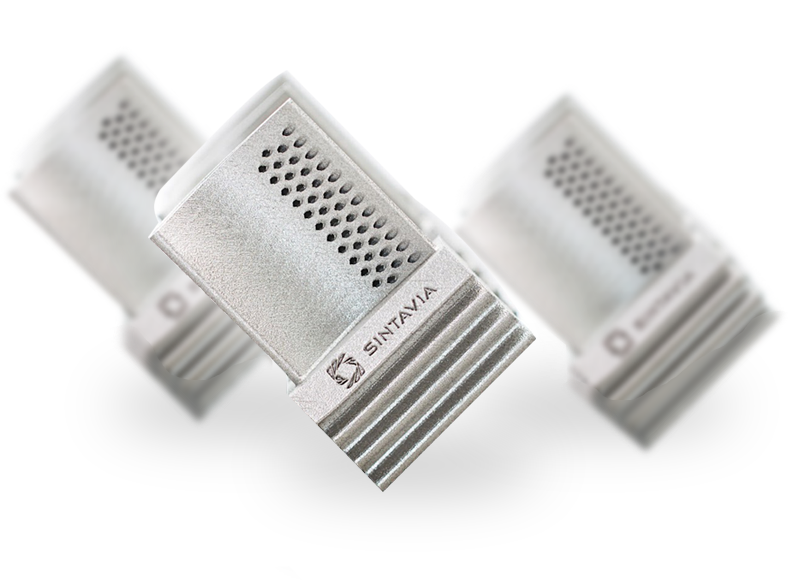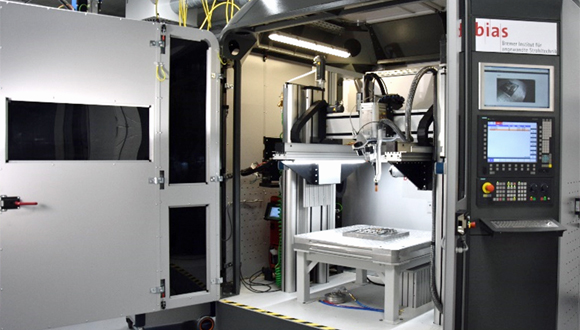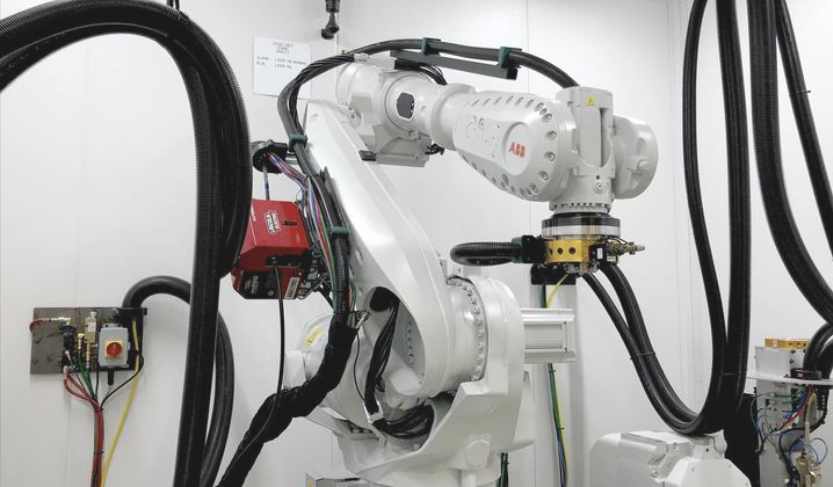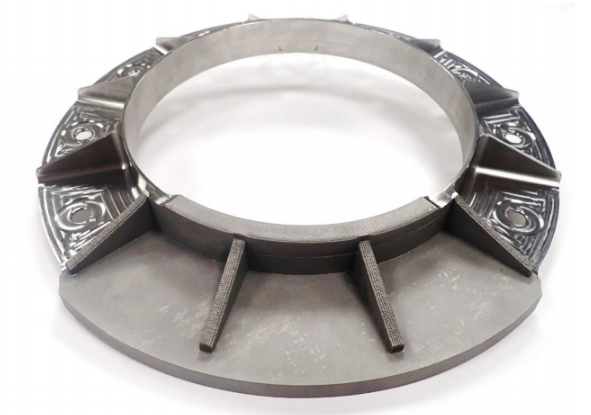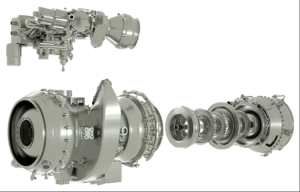APWORKS’ high-strength Scalmalloy approved for Formula 1
BMW opens new €15 million additive manufacturing campus in Munich to “industrialize 3D printing”
APWORKS 3D prints titanium part for new Bugatti Chiron Pur Sport
GKN Aerospace to Open Latest Additive Industries Process and Application Centre Close to Bristol, UK
GKN Aerospace is just one aspect of the powerhouse of manufacturing activity emanating from GKN—a company rich in history—with origins founded as far back as the 1700s. Overall, GKN presents a huge emphasis on 3D printing and additive manufacturing processes that only continues to grow within all of their main divisions featuring aerospace, automotive, powder metallurgy, and wheels and structures. With main headquarters in the UK, GKN Aerospace continues the overall forward momentum as CTO Russ Dunn opens the latest Additive Industries Process and Application Centre close to Bristol.
![]() So far, other Additive Industries centres have been opened in Eindhoven, Los Angeles, and Singapore. Each facility offers its ‘own specialism’ related to AM processes. The UK & Ireland Process and Application Centre is situated at Filton Aerospace Park, famously known as the site of the Concorde’s development and production in the 60s and 70s. Other important aerospace activities are currently taking place there, as well as engineering and manufacturing, with industry leaders like Airbus, Rolls-Royce, and GKN working nearby.
So far, other Additive Industries centres have been opened in Eindhoven, Los Angeles, and Singapore. Each facility offers its ‘own specialism’ related to AM processes. The UK & Ireland Process and Application Centre is situated at Filton Aerospace Park, famously known as the site of the Concorde’s development and production in the 60s and 70s. Other important aerospace activities are currently taking place there, as well as engineering and manufacturing, with industry leaders like Airbus, Rolls-Royce, and GKN working nearby.
 The site, now completely renovated and ‘in line with all the highest standards,’ has been used for numerous aerospace projects in the past, as well as lightning strike tests. The Additive Industries facility at this site will allow for a focus on both the production of new materials as well as continued process development.
The site, now completely renovated and ‘in line with all the highest standards,’ has been used for numerous aerospace projects in the past, as well as lightning strike tests. The Additive Industries facility at this site will allow for a focus on both the production of new materials as well as continued process development.
On March 12th, Russ Dunn, CTO of GKN Aerospace, Dr Mark Beard, Additive Industries’ Global Director Process & Application Development and General Manager of the Centre, and Daan Kersten, CEO of Additive Industries, will oversee the official opening ceremony of the facility.
The opening ceremony and event will run from 11:00 am to 5:00 pm. There will be a full schedule, featuring presentations and announcements. During the afternoon, those attending can expect the following:
- Presentation about GKN Global Technology Center (also in Filton) – by Paul Perera, VP Technology at GKN Aerospace.
- Discussion on the additive manufacturing vision for Airbus, and perspective on the growing AM ‘ecosystem’ in Filton – by Dave Best, Head of Business and Strategy for Airbus.
- Presentation on APWorks and their choices for advancing in industrialization, working with the Additive Industries Competence Centre in Filton; accompanied by a case study that includes GKN and ANSYS – by Jon Meyer, CPO for APWorks.
Both GKN and Additive Industries continue to be a powerful—and advancing—presence within the AM field, around the world. GKN has collaborated with other companies like GE Additive and Porsche, and recently they purchased Forecast3D. Additive Industries has also been in the 3D printing news headlines as they partnered with APWorks, Volkswagen, the Switzerland-based Sauber F1 Team, and more.
What do you think of this news? Let us know your thoughts! Join the discussion of this and other 3D printing topics at 3DPrintBoard.com.
[Source / Images: Additive Industries]
The post GKN Aerospace to Open Latest Additive Industries Process and Application Centre Close to Bristol, UK appeared first on 3DPrint.com | The Voice of 3D Printing / Additive Manufacturing.
APWORKS and Additive Industries advance metal 3D printing to series production in aerospace
American Magic uses Stratasys 450mc to 3D printed sailing yacht parts
Top 10 3D Printing Aerospace Stories from 2018
3D printing has played an important role in many industries over the past year, such as medical, education, and aerospace. It would take a very long time to list all of the amazing news in aerospace 3D printing in 2018, which is why we’ve chosen our top 10 stories for you about 3D printing in the aerospace industry and put them all in a single article.
Sintavia Received Approval to 3D Print Production Parts for Honeywell Aerospace
Tier One metal 3D printer manufacturer Sintavia LLC, headquartered in Florida, announced in January that it is the first company to receive internal approval to 3D print flightworthy production parts, using a powder bed fusion process, for OEM Honeywell Aerospace. Sintavia’s exciting approval covers all of Honeywell’s programs.
Boeing and Oerlikon Developing Standard Processes
Boeing, the world’s largest aerospace company, signed a five-year collaboration agreement with Swiss technology and engineering group Oerlikon to develop standard processes and materials for metal 3D printing. Together, the two companies will use the data resulting from their agreement to support the creation of standard titanium 3D printing processes, in addition to the qualification of AM suppliers that will produce metallic components through a variety of different materials and machines. Their research will focus first on industrializing titanium powder bed fusion, as well as making sure that any parts made with the process will meet the necessary flight requirements of both the FAA and the Department of Defense.
FITNIK Launched Operations in Russia
In 2017, FIT AG, a German provider of rapid prototyping and additive design and manufacturing (ADM) services, began working with Russian research and engineering company NIK Ltd. to open up the country’s market for aerospace additive manufacturing. FIT and NIK started a new joint venture company, dubbed FITNIK, which combines the best of what both companies offer. In the winter of 2018, FITNIK finally launched its operations in the strategic location of Zhukovsky, which is an important aircraft R&D center.
New Polymer 3D Printing Standards for Aerospace Industry
The National Institute for Aviation Research (NIAR) at Wichita State University (WSU), which is the country’s largest university aviation R&D institution, announced that it would be helping to create new technical standard documents for polymer 3D printing in the aerospace industry, together with the Polymer Additive Manufacturing (AMS AM-P) Subcommittee of global engineering organization SAE International. These new technical standard documents are supporting the industry’s interest in qualifying 3D printed polymer parts, as well as providing quality assurance provisions and technical requirements for the material feedstock characterization and FDM process that will be used to 3D print high-quality aerospace parts with Stratasys ULTEM 9085 and ULTEM 1010.
Premium AEROTEC Acquired APWORKS
Metal 3D printing expert and Airbus subsidiary APWORKS announced in April that it had been acquired as a subsidiary by aerostructures supplier Premium AEROTEC. Premium AEROTEC will be the sole shareholder, with APWORKS maintaining its own market presence as an independent company. Combining the two companies gave clients access to 11 production units and a wide variety of materials.
Gefertec’s Wire-Feed 3D Printing Developed for Aerospace
Gefertec, which uses wire as the feedstock for its patented 3DMP technology, worked with the Bremer Institut für Angewandte Strahltechnik GmbH (BIAS) to qualify its wire-feed 3D printing method to produce large structural aerospace components. The research took place as part of collaborative project REGIS, which includes several different partners from the aerospace industry, other research institutions, and machine manufacturers. Germany’s Federal Ministry for Economic Affairs and Energy funded the project, which investigated the influence of shielding gas content and heat input on the mechanical properties of titanium and aluminium components.
Research Into Embedded QR Codes for Aerospace 3D Printing
It’s been predicted that by 2021, 75% of new commercial and military aircraft will contain 3D printed parts, so it’s vitally important to find a way to ensure that 3D printed components are genuine, and not counterfeit. A group of researchers from the NYU Tandon School of Engineering came up with a way to protect part integrity by converting QR codes, bar codes, and other passive tags into 3D features that are hidden inside 3D printed objects. The researchers explained in a paper how they were able to embed the codes in a way that they would neither compromise the integrity of the 3D printed object or be obvious to any counterfeiters attempting to reverse engineer the part.
Lockheed Martin Received Contract for Developing Aerospace 3D Printing
Aerospace company Lockheed Martin, the world’s largest defense contractor, was granted a $5.8 million contract with the Office of Naval Research to help further develop 3D printing for the aerospace industry. Together, the two will investigate the use of artificial intelligence in training robots to independently oversee the 3D printing of complex aerospace components.
BeAM And PFW Aerospace Qualified 3D Printed Aerospace Component
BeAM, well-known for its Directed Energy Deposition (DED) technology, announced a new partnership with German company PFW Aerospace, which supplies systems and components for all civilian Airbus models and the Boeing 737 Dreamliner. Together, the two worked to qualify a 3D printed aerospace component, made out of the Ti6Al4V alloy, for a large civil passenger aircraft, in addition to industrializing BeAM’s DED process to manufacture series components and testing the applicability of the method to machined titanium components and complex welding designs.
Researchers Qualified 3D Printed Aerospace Brackets
Speaking of parts qualification, a team of researchers completed a feasibility study of the Thermoelastic Stress Analysis (TSA) on a titanium alloy space bracket made with Electron Beam Melting (EBM) 3D printing, in order to ensure that its mechanical behavior and other qualities were acceptable. The researchers developed a methodology, which was implemented on a titanium based-alloy satellite bracket.
Discuss these stories and other 3D printing topics at 3DPrintBoard.com or share your thoughts below.
3D printing news Sliced: CERN, HP Foundation, APWORKS, Phrozen, Etch-a-Sketch
Metal 3D Printing Material Scalmalloy Could be the Aircraft Material of the Future
Aviation is one of the many industries around the world that’s increasing its adoption of 3D printing, which can be used to create the lightweight components and complex parts that are necessary for an airplane. The technology makes these parts with repeatable characteristics and consistently high quality, and can also decrease the amount of time, money, and materials needed to produce them, making the overall supply chain more efficient.
Speaking of these materials, we most often hear about components being made with strong thermoplastics and metals, such as titanium. But there’s another metal out there – a lightweight, corrosion-resistant aluminium alloy nearly as strong as titanium – that could be the hero we all need for the future of aircraft. I am of course referring to Scalmalloy, an aluminum-magnesium-scandium alloy developed and patented specifically for metal 3D printing by APWorks.
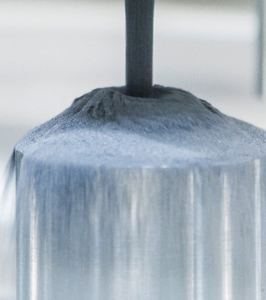 Scalmalloy is a highly ductile material that works on all existing powder bed SLM 3D printers. With a stable microstructure at temperatures of up to 250ºC, it’s highly weldable and can easily be machined for use in industries like aviation and automotive. Additionally, the material was developed specifically to use the lowest buy-to-fly ratio when compared to parts designed and manufactured using conventional methods.
Scalmalloy is a highly ductile material that works on all existing powder bed SLM 3D printers. With a stable microstructure at temperatures of up to 250ºC, it’s highly weldable and can easily be machined for use in industries like aviation and automotive. Additionally, the material was developed specifically to use the lowest buy-to-fly ratio when compared to parts designed and manufactured using conventional methods.
Recently, a collaborative group of researchers from the Nanjing University of Aeronautics and Astronautics (NUAA) and the Fraunhofer Institute for Laser Technology (ILT) published a paper about another scandium-reinforced aluminum alloy, titled “Selective laser melting of rare earth element Sc modified aluminum alloy: Thermodynamics of precipitation behavior and its influence on mechanical properties,” in the Additive Manufacturing journal.
The abstract reads, “The interest of selective laser melting (SLM) Al-based alloys for lightweight applications, especially the rare earth element Sc modified Al-Mg alloy, is increasing. In this work, high-performance Al-Mg-Sc-Zr alloy was successfully fabricated by SLM. The phase identification, densification behavior, precipitate distribution and mechnical properties of the as-fabricated parts at a wide range of processing parameters were carefully characterized. Meanwhile, the evolution of nanoprecipitation behavior under various scan speeds is revealed and TEM analysis of precipitates shows that a small amount of spherical nanoprecipitates Al3(Sc,Zr) were embedded at the bottom of the molten pool using a low scan speed. While no precipitates were found in the matrix using a relatively high scan speed due to the combined effects of the variation of Marangoni convection vector, ultrashort lifetime of liquid and the rapid cooling rate. An increased hardness and a reduced wear rate of 94 HV0.2 and 1.74 × 10-4 mm3N-1 m-1 were resultantly obtained respectively as a much lower scan speed was applied. A relationship between the processing parameters, the surface tension, the convection flow, the precipitation distribution and the resultant mechanical properties has been well established, demonstrating that the high-performance of SLM-processed Al-Mg-Sc-Zr alloy could be tailored by controlling the distribution of nanoprecipitates.”
The researchers fabricated Sc- and Zr-modified AI-Mg alloy using SLM 3D printing, and were then able to provide clarification on the relationships between the convection flow, precipitate distribution, mechanical properties, and scan speed. SEM and TEM characterize the various precipitation behavior between different scan speeds, and a relatively low scan speed helped to evaluate and explain how significantly the material’s hardness had improved.
Authors of the paper are Han Zhang, Dongdong Gu, Jiankai Yang, and Donghua Dai from NUAA, and Tong Zhao, Chen Hong, Andres Gasser, and Reinhart Poprawe from Fraunhofer ILT.
Discuss this materials research and other 3D printing topics at 3DPrintBoard.com or share your thoughts in the Facebook comments below.
[Images: APWorks unless otherwise noted]


